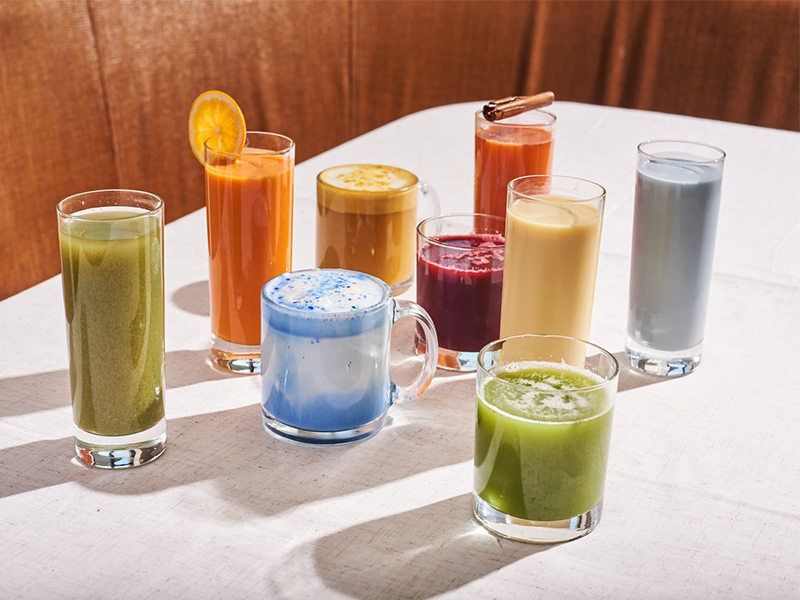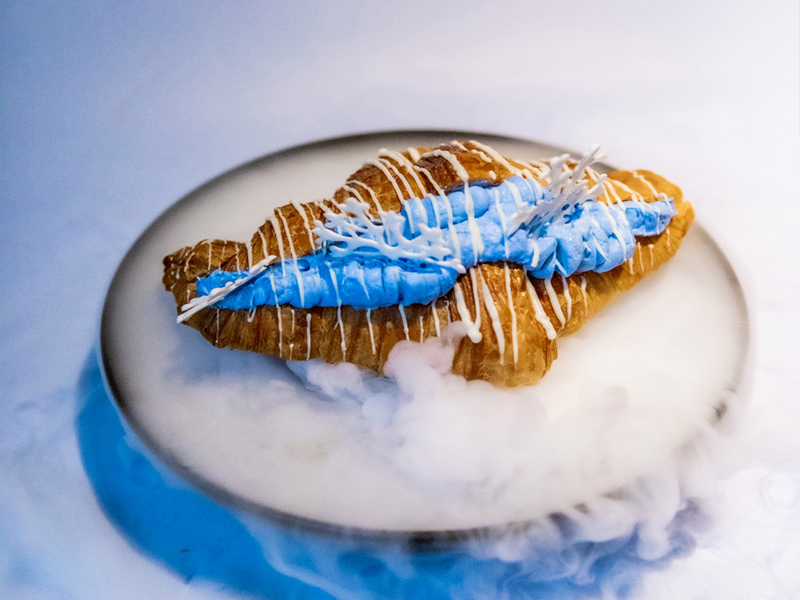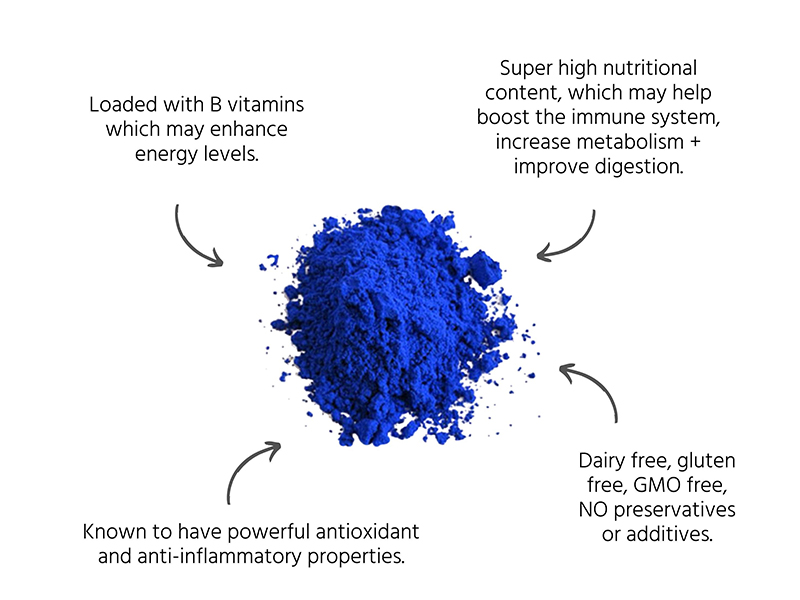
Why Is Phycocyanin Well Received By the Food Industry?
Color is proved to have a significant influence on human emotional fluctuations and even consumer behavior. It is reported that color will stimulate consumers’ desire to buy when they see favorite colors or bright colors. The same theory applies to the food industry that foods with bright or rare colors will increase appetite and induce consumers to consume.

As the two primary colors in nature, red and yellow have wide and mature applications in the global food industry regarded as food pigment. However, blue has not seen its wide application in the food and medical industry, though a huge market demand in potential. In the past, the food industry used synthetic chemical pigments as food coloring and additives to achieve rare colors like blue. However, it has been proved harmful to human health by many authoritative experts.
The continuous refinement of technology in these years takes phycocyanin as a new plant protein into the public eye gradually. Phycocyanin, also known as blue spirulina, is a kind of natural food pigment extracted and processed from spirulina. When added into the influent solution, phycocyanin will show a beautiful and novel blue color to bring a shocking visual impact. Therefore, phycocyanin is very popular among consumers and enterprises. For example, in the 25 California restaurants selected by the Michelin Guide to win the Michelin “Discovery” award in 2020, Café Gratitude offers VEGANuary Specials including a glass of juice with blue spirulina, which shows attractive blue to appeal to a bunch of consumers.

Phycocyanin is the only natural blue pigment approved by the FDA and has been widely used for a long time in the world. In the European Union, blue spirulina has been listed as the raw material of colorful food, and no limitations for its use on food. Moreover, phycocyanin is also allowed to be used as a natural blue pigment in China’s GB2760 list of food additives. From 2019 to 2020, many brands focused on blue as their attraction. At the same time, Auvers dining’s newly introduced food with blue spirulina, such as the Coronation Croissant, Arendelle Fjord, and North Mountain Pancake Stack, present charming blue, firmly attracting the attention of consumers. This shows that blue will still set off a new trend in 2021 even further.

In addition, there is necessary for phycocyanin to replace synthetic chemical pigments with the rise of “clean label” and increasing attention of consumers to the health and safety of food. Spirulina itself is rich in protein, including eight essential amino acids of the human body. It is known as “the ideal food in the 21st century” as a good protein supplement. Phycocyanin is the extract of spirulina, also has rich nutritional value. It is a natural health product with antioxidant, moisturizing, anti-allergic, and anti-inflammatory, and freckle effect. Adding blue spirulina powder into the food can effectively promote the absorption of human nutrition and inhibit the growth of cancer cells.
The successful extraction of phycocyanin has broken the scarcity of blue food in the market, making it the preferred natural blue pigment and additive for blue food ranging from candy, ice cream, drinks to alcoholic drinks. For example, Wholey, a German vegan food and beverage company, announced the launch of its smoothie bowls in the UK. The smoothie blows are sold in frozen packaging and contain exotic fruits and blue spirulina, which retain essential vitamins and nutrients.

There is no doubt that the food industry has a strong demand for phycocyanin both at present and in the future. However, due to the limitation of technology, phycocyanin has not been widely used in China. As the only enterprise in China that only focuses on the extraction, production, and research of phycocyanin, phycocyanin produced by BINMEI makes its application at the leading level in China. BINMEI also promotes its blue spirulina to be used in Mars and Nestle’s food, resulting in a huge reputation from clients. In the future, BINMEI will also have insight into the development of phycocyanin, break through the limitations of technology, and facilitate the wide promotion of spirulina in medical, cosmetics, laboratory reagents, etc.
